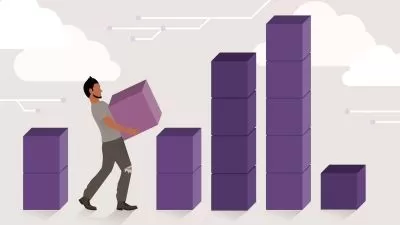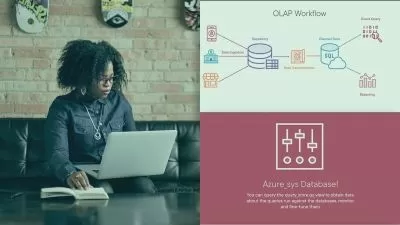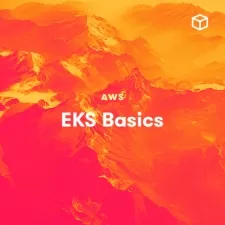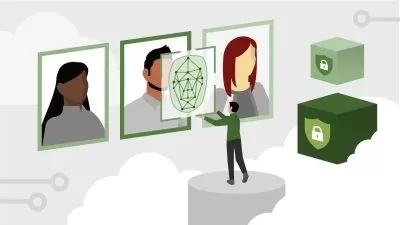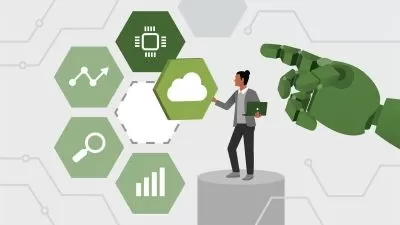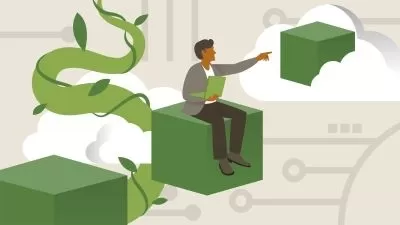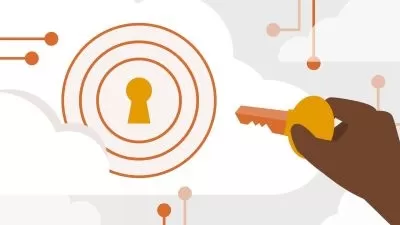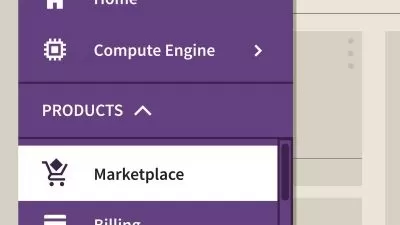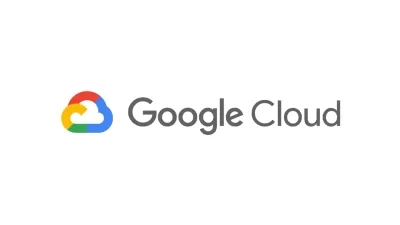Cloud Architecture Pro: Design & Engineer AWS, Azure, GCP!
Brian Newman
6:20:18
Description
From Fundamentals to Advanced Techniques in Cloud Engineering
What You'll Learn?
- The fundamentals of cloud computing, including cloud models (IaaS, PaaS, SaaS) and deployment models (public, private, hybrid).
- The role and responsibilities of a Cloud Engineer in designing, implementing, and scaling cloud solutions.
- An in-depth understanding of the core services and features offered by major cloud providers: AWS, Azure, and GCP.
- How to design and configure cloud networks, including VPCs, subnets, routing, load balancing, and auto-scaling.
- Cloud security best practices, including identity and access management, network and application security, and compliance.
- Cloud storage and database options, including object, block, and file storage, as well as relational and NoSQL databases.
- Deploying and monitoring cloud applications using containerization, serverless computing, CI/CD pipelines, and performance monitoring tools.
- Designing and implementing robust cloud architectures that ensure high availability, fault tolerance, and scalability.
- Preparing for popular cloud certifications such as AWS Certified Solutions Architect, Microsoft Certified: Azure Solutions Architect Expert, and GCP Architect
- Tips and strategies for building a successful cloud engineering career, including developing a portfolio, networking, and staying current with industry trends.
Who is this for?
What You Need to Know?
More details
DescriptionLearn the Essential Skills to Launch Your Cloud Computing Career!
This intensive course provides beginning students with everything they need to start a successful career in the dynamic field of cloud computing. Gain proficiency as a cloud engineer by mastering the technical and soft skills most in demand by employers.
Through expert instruction and hands-on labs, you will become fluent in fundamental concepts like IaaS, PaaS, SaaS, public/private/hybrid cloud, virtualization, scalability, availability, disaster recovery, automation, security, compliance, and more. Master the services and capabilities of the major cloud platforms -- AWS, Azure, and Google Cloud. Develop real-world skills through guided projects deploying cloud solutions with these providers.
Build a strong foundation in core infrastructure services like compute, storage, networking, and databases. Learn how to design resilient architectures leveraging best practices for high availability, fault tolerance, encryption, access controls, load balancing, and auto-scaling. Gain proficiency in managing costs, monitoring usage, optimizing performance, and ensuring robust security.
Throughout the course, you will develop critical abilities like solution architecture design, releasing software, infrastructure automation, troubleshooting, and debugging cloud systems. Our blended curriculum incorporates soft skills like communication, collaboration, documentation, and stakeholder management.
Completing this comprehensive program will prepare you to excel in an entry-level cloud engineering role. Add relevant skills and hands-on experience to your resume. Validate your knowledge by earning an industry-recognized AWS, Azure, or Google Cloud certification.
This course equips you with the right blend of technical expertise, practical skills, and software delivery lifecycle knowledge to thrive as a cloud computing professional. The cloud skills you develop will enable you to architect innovative solutions, streamline operations, enhance security, and drive growth for organizations seeking expertise in cloud technologies.
Enroll now to start your exciting career in this high-demand field!
Who this course is for:
- IT professionals, such as system administrators, network engineers, and developers, looking to transition into a cloud engineering role or expand their skill set to include cloud technologies.
- Students pursuing a career in cloud computing, seeking a comprehensive understanding of cloud architecture and its implementation across major cloud providers (AWS, Azure, and GCP).
- Solution architects or consultants who want to deepen their expertise in designing and implementing cloud-based solutions for their clients or organizations.
- IT managers and team leads who want to better understand the cloud landscape and its benefits, in order to make informed decisions about adopting cloud technologies.
- Professionals preparing for cloud certification exams, such as AWS Certified Solutions Architect, Microsoft Certified: Azure Solutions Architect Expert, and Google Cloud Professional Cloud Architect.
- Anyone with a general interest in cloud computing and a desire to learn more about cloud architecture, implementation, and best practices across various platforms.
Learn the Essential Skills to Launch Your Cloud Computing Career!
This intensive course provides beginning students with everything they need to start a successful career in the dynamic field of cloud computing. Gain proficiency as a cloud engineer by mastering the technical and soft skills most in demand by employers.
Through expert instruction and hands-on labs, you will become fluent in fundamental concepts like IaaS, PaaS, SaaS, public/private/hybrid cloud, virtualization, scalability, availability, disaster recovery, automation, security, compliance, and more. Master the services and capabilities of the major cloud platforms -- AWS, Azure, and Google Cloud. Develop real-world skills through guided projects deploying cloud solutions with these providers.
Build a strong foundation in core infrastructure services like compute, storage, networking, and databases. Learn how to design resilient architectures leveraging best practices for high availability, fault tolerance, encryption, access controls, load balancing, and auto-scaling. Gain proficiency in managing costs, monitoring usage, optimizing performance, and ensuring robust security.
Throughout the course, you will develop critical abilities like solution architecture design, releasing software, infrastructure automation, troubleshooting, and debugging cloud systems. Our blended curriculum incorporates soft skills like communication, collaboration, documentation, and stakeholder management.
Completing this comprehensive program will prepare you to excel in an entry-level cloud engineering role. Add relevant skills and hands-on experience to your resume. Validate your knowledge by earning an industry-recognized AWS, Azure, or Google Cloud certification.
This course equips you with the right blend of technical expertise, practical skills, and software delivery lifecycle knowledge to thrive as a cloud computing professional. The cloud skills you develop will enable you to architect innovative solutions, streamline operations, enhance security, and drive growth for organizations seeking expertise in cloud technologies.
Enroll now to start your exciting career in this high-demand field!
Who this course is for:
- IT professionals, such as system administrators, network engineers, and developers, looking to transition into a cloud engineering role or expand their skill set to include cloud technologies.
- Students pursuing a career in cloud computing, seeking a comprehensive understanding of cloud architecture and its implementation across major cloud providers (AWS, Azure, and GCP).
- Solution architects or consultants who want to deepen their expertise in designing and implementing cloud-based solutions for their clients or organizations.
- IT managers and team leads who want to better understand the cloud landscape and its benefits, in order to make informed decisions about adopting cloud technologies.
- Professionals preparing for cloud certification exams, such as AWS Certified Solutions Architect, Microsoft Certified: Azure Solutions Architect Expert, and Google Cloud Professional Cloud Architect.
- Anyone with a general interest in cloud computing and a desire to learn more about cloud architecture, implementation, and best practices across various platforms.
User Reviews
Rating
Brian Newman
Instructor's Courses
Udemy
View courses Udemy- language english
- Training sessions 67
- duration 6:20:18
- Release Date 2023/10/12






